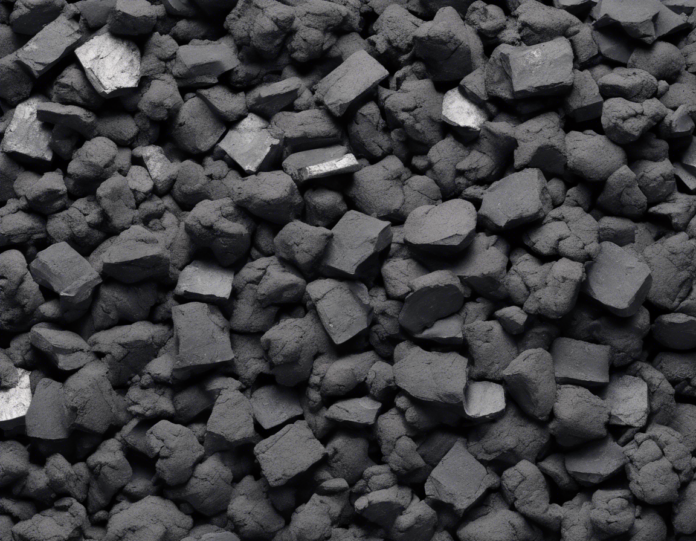Coal Calorific Value: Understanding the Potential Hidden in the Black Gold
Whether it is for power generation, industrial processes, or residential heating, coal remains a vital source of energy worldwide. One crucial characteristic that determines the quality and energy content of coal is its calorific value. Also known as heating value, this metric provides insight into the amount of heat energy that can be released through the combustion of a specific quantity of coal. By understanding the significance of coal calorific value and how it can impact various applications, we can unlock the true potential of this abundant natural resource.
What Is Coal Calorific Value?
Coal calorific value, expressed in British thermal units (BTU) per pound or kilocalories (kcal) per kilogram, is a measure of the heat energy released during combustion. It represents the total chemical energy contained in coal and is a key factor in determining the efficiency of energy conversion processes. The higher the calorific value, the more heat energy the coal can produce per unit mass. This makes it a crucial parameter for assessing the quality and utility of different coal types.
Types of Coal and Their Calorific Values
1. Anthracite:
- Calorific Value: 25-33 MJ/kg
- Description: Anthracite is the highest rank of coal and has the highest calorific value among coal types. It is characterized by its shiny black appearance and high carbon content.
2. Bituminous:
- Calorific Value: 17-24 MJ/kg
- Description: Bituminous coal is widely used for electricity generation and industrial applications. It has a medium to high calorific value and is known for its compact and black appearance.
3. Sub-bituminous:
- Calorific Value: 14-21 MJ/kg
- Description: Sub-bituminous coal has a lower calorific value compared to bituminous coal. It is commonly used for power generation due to its abundance and lower sulfur content.
4. Lignite:
- Calorific Value: 8-14 MJ/kg
- Description: Lignite is the lowest rank of coal with the lowest calorific value. It has a brownish color and is often used in power plants for electricity generation.
Importance of Calorific Value in Coal Utilization
-
Energy Production: The calorific value of coal directly affects the amount of heat energy that can be generated through combustion. Higher calorific value coal results in more efficient energy production and lower fuel consumption.
-
Economic Viability: Industries and power plants often consider the calorific value of coal when making procurement decisions. Higher calorific value coal may have a higher initial cost but can lead to cost savings in the long run due to increased energy output.
-
Environmental Impact: Coal with higher calorific value typically contains lower levels of impurities such as sulfur and ash, which can reduce emissions and minimize environmental impact during combustion.
-
Process Efficiency: Different industrial processes require specific heat input levels for optimal operation. Understanding the calorific value of coal allows industries to tailor their fuel selection to meet these requirements and enhance process efficiency.
Factors Affecting Coal Calorific Value
-
Coal Rank: The carbon content and maturation level of coal influence its calorific value. Higher-rank coals like anthracite have greater carbon content and, subsequently, higher calorific values.
-
Moisture Content: The presence of moisture in coal can significantly reduce its calorific value by absorbing heat energy during combustion. Therefore, low moisture content coal is preferred for efficient energy production.
-
Ash Content: Ash is the incombustible residue left after coal combustion. High ash content in coal can dilute the calorific value and increase process inefficiencies.
-
Sulfur Content: Sulfur in coal can lead to pollutant emissions such as sulfur dioxide during combustion. Low sulfur coal is preferred to minimize environmental impact and meet emission regulations.
-
Volatiles Content: The volatile matter in coal contributes to flame stability and ignition characteristics. Higher volatile content can enhance combustion efficiency and heat release.
Advantages of High Calorific Value Coal
-
Increased Energy Output: High calorific value coal can generate more heat energy per unit mass, resulting in increased energy production efficiency.
-
Reduced Fuel Consumption: Utilizing high calorific value coal can lead to lower fuel consumption, reducing operational costs for industries and power plants.
-
Cleaner Combustion: Lower sulfur and ash content in high calorific value coal can contribute to reduced emissions and improved air quality during combustion.
-
Versatile Applications: High calorific value coal can be suitable for a wide range of applications, including power generation, industrial processes, and residential heating.
FAQs (Frequently Asked Questions)
1. What is the calorific value of coal?
The calorific value of coal refers to the amount of heat energy released per unit mass of coal during combustion. It is typically measured in British thermal units (BTU) per pound or kilocalories (kcal) per kilogram.
2. How does coal rank affect its calorific value?
Higher-rank coals, such as anthracite, have higher calorific values due to their greater carbon content and maturation level. Lower rank coals, like lignite, have lower calorific values.
3. Why is moisture content important in determining coal calorific value?
Moisture in coal absorbs heat energy during combustion, reducing the effective calorific value. Low moisture content coal is preferred for optimal energy production.
4. How does coal with high calorific value benefit energy production?
High calorific value coal can lead to increased energy output, reduced fuel consumption, cleaner combustion, and enhanced process efficiency in various applications.
5. What role does sulfur content play in coal calorific value?
High sulfur content in coal can lead to pollutant emissions during combustion, impacting air quality. Low sulfur coal is preferred for environmental sustainability and regulatory compliance.
In conclusion, understanding the significance of coal calorific value is essential for maximizing the utility and efficiency of this abundant energy resource. By considering factors such as coal rank, moisture content, and sulfur levels, industries and power plants can make informed decisions to optimize energy production, reduce environmental impact, and enhance economic viability. High calorific value coal presents a valuable opportunity for unlocking the true potential of coal as a reliable energy source in various sectors.

